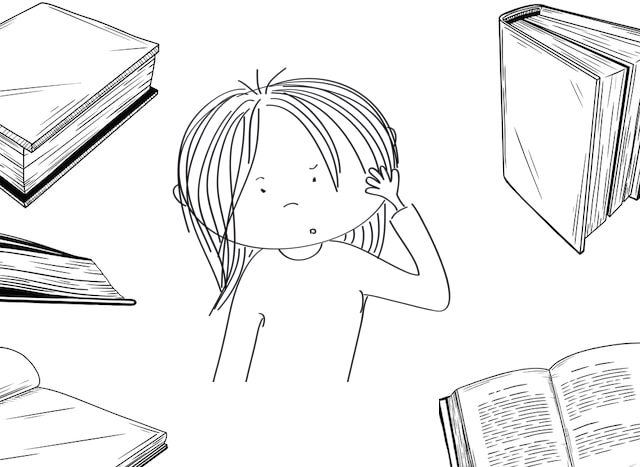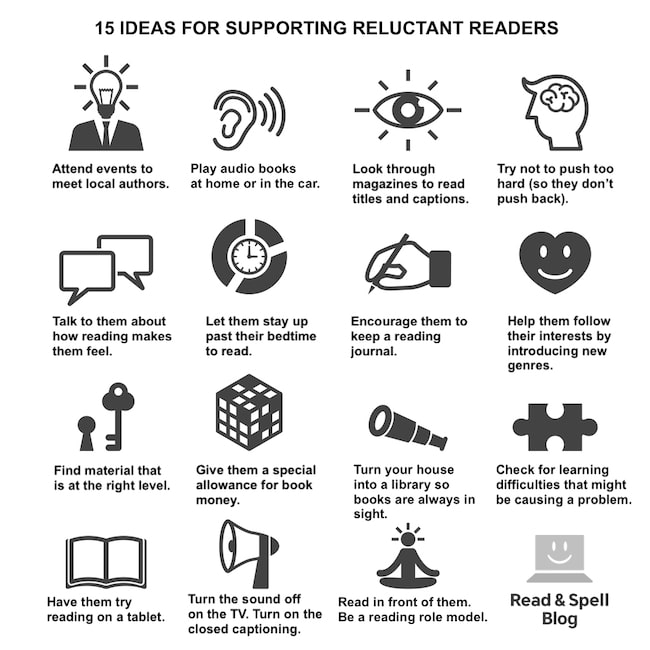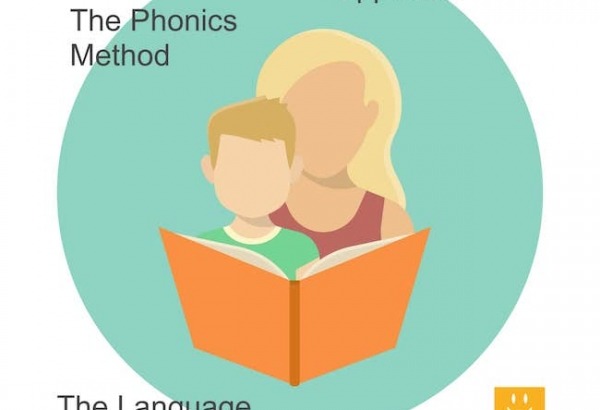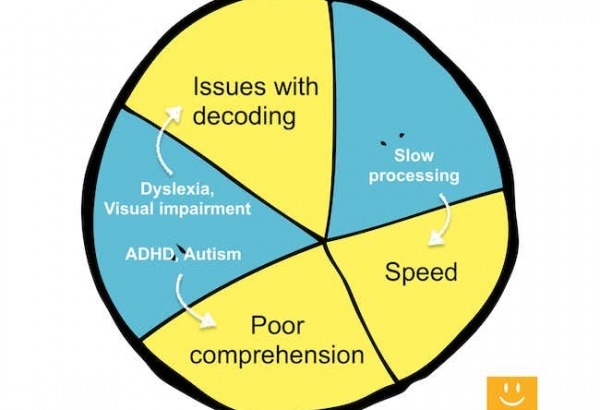Understanding reluctant readers and how to support them

Teachers and parents may be familiar with the term “reluctant reader.” It refers to a child or young-adult who isn’t engaged when it comes to reading. These are the kids who tend to put a book down as soon as it’s given to them or pass it back and forth between their hands without ever opening to a page.
When forced to read, reluctant readers often appear demotivated and disinterested. You may see them looking out the window or staring blankly down, as though they are unable to focus on the text in front of them.
For some children reluctance to read is due to competing interests such as sports, arts, or another extracurricular activity. For others, it’s because reading is difficult and they associate it with frustration and strain.
This is especially true for dyslexic readers who often struggle with sounding out words, sight-reading and keeping their place on a page (or who can sound out words one by one without getting much meaning from a sentence). Children with attention difficulties may have trouble sitting still and concentrating and end up needing to re-read a paragraph several times. Learners with visual processing difficulties can struggle to make sense of the symbols on a page.
For these struggling readers, also called "striving readers, there is also an emotional component to avoidance of reading. If something is hard for you but easy for your peers, you may feel bad about yourself. Low self-esteem can translate into anxiety and avoidance of the activity, which in turn prevents kids from improving their skills.
That’s why in addition to finding the right resources for struggling readers, a supplementary strategy program may also be helpful. The program you choose will ultimately depend on the nature of the learning and/or attention difference, or specific challenges experienced by the individual. You can learn more about your options in these articles: fluency strategies for struggling readers, helping a student with dyslexia, ADHD reading difficulties, autism and literacy skills. As children develop their skills and become more confident, they may be more willing to read, both at school and at home.
Why is reading important?
Getting a child engaged in reading is worth all of the effort you may have to put in and one of the best ways to instill a love of reading is to read to him or her from a very young age. Studies show a correlation between the amount of reading for pleasure a child does and their grades at school. Reading helps children build their vocabulary and is at once an essential skill for success in an academic setting and a great aid for personal development.
Readers experience life through the eyes of different narrators, which helps them develop empathy and learn more about the world. Just keep in mind that motivation works differently for kids and telling a child “reading is important” may not always be enough to convince them. Have a look at our section below on top tips and strategies for motivating reluctant readers.

How it works
Reading requires a combination of bottom-up and top-down processing to help us make sense of the letters, words, sentences and ideas on a page, and integrate them with our existing prior knowledge of a topic.
Decoding
As a beginner reader, a child must learn to pair letters with the sounds they represent in order to decode written language. This process is also called “sounding out words,” though the name is deceptive because English words are not always written in the way in which they are said. Moreover, there are more sounds than letters in English so multiple letter combinations can represent the same sound – which can be very confusing for a child.
Sight-reading
The more a reader encounters a word, the easier it is for him or her to recognize this set of letters automatically. This is called sight-reading and is how we are able to develop greater fluency and speed in reading. There is a specific list of high-frequency words that make up 50-75% of all children’s books and are particularly useful for a child to be able to sight-read.
Syntax and vocabulary
Reading relies on an individual's ability to recognize words and activate their meanings based on the syntax of the sentence in which they are presented. Unknown words can be guessed at depending on how many other words are familiar – and if the context makes the meaning clear. The more words a learner knows, the more he or she is able to acquire. That’s why vocabulary growth occurs exponentially. It is also why a child who is behind will have a harder time catching up.
Prior knowledge
Pre-reading activities make it easier for the reader to integrate new information with an existing understanding of how the world works. In order to makes sense of and situate a text, a child needs to think about what he or she is about to read and activate prior knowledge. This can be accomplished through a pre-reading discussion, by looking at the title of a book, skimming through the text, or considering illustrations and images.
Working memory
Short-term memory is used to hold information in mind in order to recognize referents and follow a storyline, even within a single sentence. This is particularly important for longer texts and chapter books.
Comprehension
Understanding the gist of a reading, the specific details, and any inferences or predictions that can be made, are all part of reading comprehension and may be disrupted if there is a breakdown in some of the basic bottom-up processes, such as decoding.
Learn more about teaching kids to read and common problems with reading in these articles.
Identifying reluctant readers
Reluctance to read may be more common among boys than girls and is more likely to occur in children with learning difficulties who struggle with the mechanics of reading. Just keep in mind that not all reluctant readers are “bad” at reading. It might be a child is simply not interested or has yet to be inspired by books. Some people even object to the term “reluctant reader” preferring to call these children “dormant readers” instead.

How to help
Because every child is unique, there is no one size fits all solution to motivation. You may need to try different strategies before you find one that works.
- Turn your house into a library. It’s hard to avoid books when you see them at every turn. By leaving appealing titles around, in the bathroom, in the kitchen, even on the couch, you maximize the chances that curiosity will get the better of your child and they’ll have a flip through a story to see what it’s all about. Stocking your house with books is also a good way to ensure there’s a wide variety of reading material available. You might try some books with cover art designed to catch a child’s eye or even a book written for an older audience, particularly if it’s something you read as a young-adult. Put out fiction but include a few how-to books and factual magazines like National Geographic too.
- Read in front of your children. One of the best ways to teach a child how to read for pleasure is to do so yourself! Make reading a regular part of your day and prioritize it so children understand its value compared to other activities you participate in, like going to the gym and spending time online. If you’re reading a particularly good book, you might share the storyline with your learner or read them a small excerpt if the child seems interested and willing to listen.
- Try not to be too pushy. Kids can see right through our efforts to get them to read and quite often they resist simply because they like pushing back against authority. But once the mandate to read seems less like an order, it’s easier to get their attention. Keep in mind a child who comes around to reading of his or her own accord is more likely to keep reading outside of school.
- Ask them how they feel. Try talking to them about reading. Have they had negative experiences in the past? Have they tried reading about topics they’re interested in? What might be preventing them from reading? If you can focus your efforts on both correcting any misconceptions they have about books and creating new positive experiences that involve reading, you may be able to convince them to give it another go.
- Find material at the right level. It’s important to set a reluctant reader up for success by choosing something they’re interested in that’s also at the right level. This means not giving them books that are too hard, but also not insulting them by providing material aimed at younger children. When in doubt about the level of difficulty, try the five-finger test. Lift up a finger for every unfamiliar word you encounter. If all five fingers are up after several paragraphs, you may want to choose another book.
- Help them follow their interests. Reading is a lot easier if you are interested in what you’re reading - and if you have some prior knowledge of the topic. If your goal is to get a child into reading, introduce them to books you think they’ll like, then let them choose what to read. It could be a comic book, a sports magazine, a biography of a famous artist, Harry Potter, a catalog or even a reference series on dinosaurs! The fact that they chose it is what matters.
- Set a regular family reading time. Reading doesn’t have to be an anti-social activity. Consider setting a family reading time in which everyone brings their own book and reads side by side. If you know another family with kids of a similar age, why not invite them too and turn it into a social event? You might also pick a book everyone will enjoy reading and hold a post reading-time discussion. Just take care in asking a struggling reader to read aloud as this can increase anxiety and be demotivating for some kids.
- Get creative. Some parents allow their kids to stay up an extra hour if it means they spend that time reading a book in bed. Others push a reading culture by visiting coffee shops, historic libraries, and taking regular trips to bookstores to meet authors. Providing an allowance for book money, turning stories upside-down by reading them wrong to introduce an element of humor, or turning off the sound on a TV program so the child has to read the closed captions are all possibilities - different approaches work for different kids. In the end, it’s about creating a positive experience for the child that includes books.
- Try technology. If a child is more than happy to use a phone or tablet, try getting some books on a Kindle app. If there are any visual processing disorders or a child has some degree of visual impairment, you might also consider audiobooks. When used appropriately, technology can be a very powerful tool for readers who need to expand their vocabulary. You might even try a typing program that strengthens sight reading and decoding skills. Consider the type and size of font you display and remember that it factors into how much text can be displayed at one time without scrolling. This can affect a reader’s ability to make sense of referents, which is why we don’t read in exactly the same way on a screen as with a printed book. Also, you’ll want to be sure to monitor the child to make sure he or she stays on tasks as it can be tempting to open up a different app and play a game when no one is looking!
You can find more tips in our article on motivating kids to read.
Tools that strengthen literacy skills
Reading focused products can help kids build literacy skills but it’s a bit of a chicken and egg issue: in order to use apps that strengthen literacy skills, children need some reading skills to begin with. However, there are ways you can help a struggling reluctant reader without putting the focus overtly on reading.
One approach is through a computer-delivered and phonics-focused typing program. Many children who struggle with reading and spelling use Touch-type Read and Spell to boost reading ability as they master the keyboard. That’s because the focus is on typing – a skill to help them use computers - not reading, yet learners still need to read the words on the screen so they can type them. An audio voice-over and targeted scope and sequence of words means learners strengthen their understanding of sound-letter mapping in English and become more familiar with sight words at the same time. The effect is that a reluctant reader can increase reading power, learn vocabulary and build spelling skills without reading a traditional book.
When the time comes to sit down to read, a child may experience less frustration than before and feel empowered by his or her increased skill level.
Do you teach a reluctant reader?
Let us know more about your reluctant reader. Does he or she also struggle with a learning difficulty? What has worked for you in terms of strategies for success? Please share your story with us.
For learners who struggle with reading
TTRS is a phonics-based touch-typing program that strengthens decoding and sight reading skills for children and adults who struggle with reading.
Chris Freeman
TTRS has a solution for you
An award-winning, multi-sensory course that teaches typing, reading and spelling

How does TTRS work?
Developed in line with language and education research
Teaches typing using a multi-sensory approach
The course is modular in design and easy to navigate
Includes school and personal interest subjects
Positive feedback and positive reinforcement
Reporting features help you monitor usage and progress














